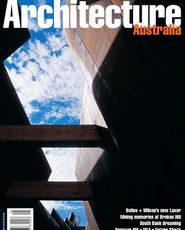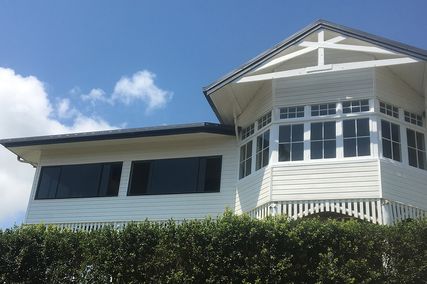Ted Farmer, NSW Government Architect from 1958 to 1973, died at the age of 91 on Sunday, 17 June 2001. Farmer was the sixteenth government architect in a continuous line from Francis Greenway to James Barnet, Walter Liberty Vernon and Cobden Parkes. At the time he became government architect (by winning the position over five more senior officers), the role had become fairly conservative.
His predecessor, Cobden Parkes, the son of Sir Henry Parks, had not allowed his architects to submit for architecture awards and the postwar era had not led to high quality architecture.
Farmer was presented with a great opportunity which he took with great style.
Suddenly winning awards was on the agenda and Farmer gave support to his design room under Harry Rembert, with the young turks of Australian architecture.
At incredibly young ages Ken Woolley, Peter Hall, Michael Dysaght, Peter Webber, Andrew Andersons and Lionel Glendening were given free reign. What followed were six Sulman Awards, two Blacket Awards and countless merit awards for excellent architecture.
The Government Architect’s Branch was the place to be. A traineeship program that began in 1948 had only attracted three applicants yet, at the end of the 1960s at the height of Farmer’s period, 1,500 school leavers applied for 12 positions in the Government Architect’s Branch. Across Australia Ted Farmer and the NSW Government Architect’s Branch were seen as leading architectural debate. In 1972 Farmer was awarded the Royal Australian Institute of Architect’s highest honour, the Gold Medal.
In an address to his staff in 1972 shortly before retirement Farmer said, “I flatter myself that the Branch has achieved an aim that was always before me, and that is to lead the profession both in aesthetic and practical aspects. The public recognition that we have received both in Australia and overseas is proof of this. I think our status was never higher.”%br% I set out to research the history of this unique band of people and visited Ted Farmer a number of times at his home in Explorer Road, Glenbrook. Ted would spend hours reminiscing about the good old days.
He was surrounded by his records, diaries, drawing instruments, photographs and an old grandfather clock that intriguingly had the words “Government Architect” across the face. Ted had a story about a previous government architect who insisted that there be no advertising in Government House and on seeing the clock maker’s name on the clock face instructed that this be changed to the words “Government Architect”.
Ted often had a sly smile on his face and this always came out when we discussed the Opera House dramas over the Utzon dismissal. “I’ve written it all down,” Ted would say, “but it won’t become public until after I die.”%br% His friends from the GAB days have heard that Ted has deposited as many as three books in the Mitchell Library to be made public after his death. Knowing Ted’s eye for detail and his incredible memory I can believe this. But I also know that Ted was a real gentleman with a fairly soft side to his nature. He was an inclusivist. He was passionate. He was most upset at the demolition of the State Office Block which he saw as the pinnacle of achievement during his term.
Photographs taken during construction show him striding across the site, a tall superior person with bow tie and an ever present pipe in his mouth.
Two weeks before his death, Ted’s two children, Ann and Peter, were back in Sydney from their overseas locations and both had the pleasure of reminiscing with him about the past. Ted’s good friends also visited him recently to remember the good old days. Having seen his family and his friends, Ted Farmer was happy to die in his sleep on the morning of Sunday, 17 June 2001.
Chris Johnson is the current NSW Government Architect.















